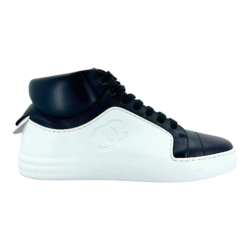
A bright, white smile is one of the most desired features in modern beauty standards. Teeth Whitening has become increasingly popular, thanks to advancements in dental technology and the growing awareness of oral aesthetics. Whether you’re preparing for a special occasion or simply want to boost your confidence, understanding how teeth whitening works and which methods are safe is essential.
What Is Teeth Whitening?
Teeth whitening is a cosmetic dental procedure designed to remove stains and discoloration from the surface of teeth. The goal is to restore or enhance the natural whiteness of your teeth using bleaching agents such as hydrogen peroxide or carbamide peroxide. Whitening treatments can be performed professionally by a dentist or at home using over-the-counter products.
Common Causes of Tooth Discoloration
Before choosing a whitening treatment, it’s important to understand why teeth become discolored in the first place. Some of the most common causes include:
-
Food and Drinks: Coffee, tea, red wine, and dark-colored berries can stain teeth over time.
-
Smoking: Nicotine and tar are notorious for turning teeth yellow or brown.
-
Aging: As we age, the enamel wears down, exposing the yellowish dentin beneath.
-
Poor Oral Hygiene: Inadequate brushing and flossing can lead to plaque buildup and discoloration.
-
Medications: Certain antibiotics and medical treatments can cause intrinsic stains that are harder to remove.
Types of Teeth Whitening Treatments
There are several whitening methods available, each with its own benefits and drawbacks.
1. Professional In-Office Whitening
This is the fastest and most effective whitening method. A dentist applies a strong bleaching gel to your teeth, sometimes activated by laser or light. Results are visible in a single session, and teeth can become several shades whiter.
Advantages: Immediate results, professionally supervised, long-lasting effects.
Disadvantages: Expensive compared to other methods.
2. At-Home Whitening Kits
Dentists can provide custom-fitted trays and professional-grade whitening gel for home use. The trays are worn for a specific period daily, usually over one to two weeks.
Advantages: Convenient, effective, and safer than store-bought kits.
Disadvantages: Results take longer than in-office treatments.
3. Over-the-Counter Whitening Products
These include whitening strips, toothpaste, pens, and gels available at pharmacies. They contain mild bleaching agents suitable for minor stains.
Advantages: Affordable and easy to use.
Disadvantages: Limited effectiveness, may cause gum irritation if overused.
Natural Teeth Whitening Remedies
Some people prefer natural alternatives to chemical treatments. Common home remedies include baking soda toothpaste, activated charcoal, and oil pulling with coconut oil. While these methods can help reduce surface stains, they are less effective for deep discoloration. It’s essential to consult a dentist before trying them, as overuse can damage tooth enamel.
Safety Tips for Teeth Whitening
To ensure your whitening process is safe and effective, follow these guidelines:
-
Always consult your dentist before starting any whitening treatment.
-
Avoid overusing whitening products to prevent enamel erosion.
-
Maintain oral hygiene by brushing twice a day and flossing regularly.
-
Limit consumption of staining foods and drinks.
-
Quit smoking to preserve your results and overall oral health.
Maintaining Your Bright Smile
After whitening, proper maintenance is key to keeping your smile radiant. Use a whitening toothpaste once or twice a week to prevent new stains, and schedule regular dental check-ups. Drinking water after consuming staining foods or beverages also helps reduce discoloration.
Conclusion
Teeth whitening can dramatically improve your appearance and self-confidence, but it must be done safely and responsibly. With options ranging from professional treatments to natural remedies, there’s a whitening method for everyone. Always prioritize dental health over quick results, and consult your dentist to choose the most suitable and effective approach.



